The governor of Maharashtra is the ceremonial head of the Indian state of Maharashtra. The Constitution of India confers the executive powers of the state to the governor; however, the de facto executive powers lie with the Council of Ministers.[1]
C. P. Radhakrishnan is the current governor of Maharashtra since 31 July 2024.[2][3]
Powers and duties
The governor formally appoints many of the state officials, including the advocate general of Bombay, the Lokayukta and Upa Lokayukta, the state election commissioner, the chairman and members of the Maharashtra Administrative Tribunal, the chairman and members of the Maharashtra State Human Rights Commission, the chairman and members of the Maharashtra Public Service Commission (MPSC), the chairmen and members of the three development boards, the sheriff of Bombay, and the state chief information commissioner.
List of governors
Royal governors (1662–1668)

The marriage treaty of Charles II of England and Catherine of Braganza that concluded on 8 May 1661 incorporated Bombay into the English colonial empire- the territory was part of Catherine's dowry.[4] On 19 March 1662, Abraham Shipman was appointed the first Governor and General of the city, and his fleet arrived in Bombay in September and October 1662. On being asked to hand over Bombay and Salsette to the English, the Portuguese Governor contended that the Bombay Island alone had been ceded, and alleging irregularity in the patent, he refused to give up even Bombay Island. The Portuguese Viceroy declined to interfere and Shipman was prevented from landing in Bombay. He was forced to retire to the island of Anjediva in North Canara and died there in October 1664. In November 1664, Shipman's successor Humphrey Cooke agreed to accept Bombay Island without its dependencies.[5] The first four governors held Bombay for the Crown.[6]
| No. | Name | Assumed office | Left office | Years in office | Remarks[a] |
|---|---|---|---|---|---|
| 1 | Abraham Shipman | 19 March 1662 | October 1664 | 2 | |
| 2 | Humphrey Cooke | February 1665 | 5 November 1666 | 1 | Acting |
| 3 | Gervase Lucas | 5 November 1666 | 21 May 1667 | 1 | |
| 4 | Henry Gary | 22 May 1667 | 23 September 1668 | 1 | Acting |
Sources: The India List and India Office List[6] and Origin of Bombay[7]
Company governors (1668–1862)
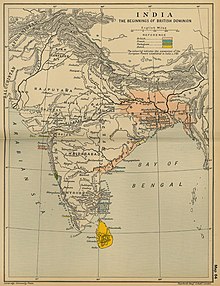


On 21 September 1668, the Royal Charter of 27 March 1668 led to the transfer of Bombay from Charles II to the British East India Company for an annual rent of £10 (equivalent retail price index of £1,226 in 2007).[8] The islands were handed over to the company on 23 September 1668. Upon the transfer, Bombay was made subordinate to the company's settlement in Surat.[9] During 1668–87, the Governors of Bombay, who were also presidents of Surat Council, spent most of their time in Surat. During this time, Bombay was administered by a Deputy Governor.[6]
In 1687, the Company shifted its main holdings from Surat to Bombay, which had become the administrative centre of all the west coast settlements.[10] Following the transfer, Bombay was placed at the head of all the company's establishments in India.[11] However, the onset of plague and cholera delayed implementation, and the headquarters was not actually moved to Bombay until 1708.[9] During the Governorships of John Gayer, Nicholas Waite, and William Aislabie (1694–1715), the Bombay Governors also held the title of "General".[6][12] Their main title, meanwhile, continued to be "President", with Governor of Bombay being a supplementary title and role.
During the 18th century, the Maratha Empire expanded rapidly, claiming Konkan and much of eastern Gujarat from the disintegrating Mughal Empire. In western Gujarat, including Kathiawar and Kutch, the loosening of Mughal control allowed numerous local rulers to create virtually independent states. In 1737, Salsette was captured by Baji Rao I of the Maratha Empire from the Portuguese, and the Portuguese province of Bassein was ceded to the Marathas in 1739.[13] The growth of the Bengal provinces soon undermined Bombay's supremacy. In 1753, Bombay was made subordinate to Calcutta. Thereafter, Bengal always maintained much greater importance relative to Madras and Bombay.[9] Bankot (Fort Victoria) in Konkan was incorporated into Bombay Presidency in 1756.[14] The First Anglo-Maratha War began with the Treaty of Surat, which was signed on 6 March 1775, between Raghunathrao of the Maratha Empire and the British. According to the treaty, Raghunathrao ceded Salsette and Bassein to the British. The war ended when Salsette, Elephanta, Hog Island, and Karanja were formally ceded to the British by the Treaty of Salbai, signed on 17 May 1782. These territories were incorporated into the Bombay Presidency. Also according to the treaty, Bassein and its dependencies were restored to Raghunathrao, while Bharuch was ceded to the Maratha ruler Scindia.[15] The British annexed Surat on 15 May 1800.[16] The British received the districts of Ahmadabad, Bharuch and Kaira in 1803 after British victory in the Second Anglo-Maratha War.[17]
The framework of the Presidency formed between 1803 and 1827. The districts of Ahmadabad, Bharuch, and Kaira in Gujarat were taken over by the Bombay Government in 1805 and enlarged in 1818. The numerous small states of Kathiawar and Mahikantha were organised into princely states under British suzerainty between 1807 and 1820.[18] Baji Rao II, the last of the Maratha Peshwas, was defeated by the British in the Battle of Kirkee, which took place near Poona in the Deccan on 5 November 1817.[19] Following his defeat, the whole of the Deccan (except Satara and Kolhapur), and certain parts of Gujarat, were included in the Presidency.[20][21] The districts included were Khandesh, Belgaum, Dharwar, Ratnagiri, Kolaba (except Alibag taluka), Poona, Ahmadnagar, Nasik.[22] Aden was incorporated in 1839.[23] Alibag taluka was annexed in 1840 and added to the Presidency.[24] Sind province, which included the districts of Karachi, Hyderabad, Shikarpur, Thar and Parkar, and Upper Sind Frontier, were annexed in 1847.[25] In 1848, the districts of Satara and Bijapur were added to the Presidency.[22] In 1853, Panch Mahals in Gujarat was leased from the Scindias.[18] The Canara district, which was under Madras Presidency, was bifurcated into North Canara and South Canara in 1860. South Canara remained under Madras Presidency, while North Canara was transferred to Bombay Presidency in 1861.[22][26] Between 1818 and 1858, certain princely states like Mandvi in Surat and some in Satara were lapsed to the Presidency.[22]
| No. | Name | Portrait | Assumed office | Left office | Years in office | Remarks[a] |
|---|---|---|---|---|---|---|
| 1 | George Oxenden | 
|
23 September 1668 | 14 July 1669 | 1 | |
| 2 | Gerald Aungier | 14 July 1669 | 30 June 1677 | 8 | ||
| 3 | Henry Oxenden | 
|
30 June 1677 | 27 October 1681 | 4 | |
| 4 | John Child | 27 October 1681 | 4 February 1690 | 8 | ||
| 5 | Richard Keigwin[b] | 27 December 1683 | 19 November 1684 | 1 | Unofficial | |
| 6 | Bartholomew Harris | 4 February 1690 | 10 May 1694 | 4 | ||
| 7 | Daniel Annesley | 10 May 1694 | 17 May 1694 | Acting | ||
| 8 | John Gayer | 17 May 1694 | November 1704 | 10 | ||
| 9 | Nicholas Waite | November 1704 | September 1708 | 4 | ||
| 10 | William Aislabie | September 1708 | 11 October 1715 | 7 | ||
| 11 | Stephen Strutt | 11 October 1715 | 26 December 1715 | Acting | ||
| 12 | Charles Boone | 26 December 1715 | 9 January 1722 | 7 | ||
| 13 | William Phipps | 9 January 1722 | 10 January 1729 | 7 | ||
| 14 | Robert Cowan | 10 January 1729 | 22 September 1734 | 5 | ||
| 15 | John Horne | 22 September 1734 | 7 April 1739 | 5 | ||
| 16 | Stephen Law | 7 April 1739 | 15 November 1742 | 3 | ||
| 17 | John Geekie | 15 November 1742 | 26 November 1742 | Acting | ||
| 18 | William Wake | 26 November 1742 | 17 November 1750 | 8 | ||
| 19 | Richard Bourchier | 17 November 1750 | 1760 | 10 | ||
| 20 | Sir John Holkell | 1760 | 28 February 1760 | Acting | ||
| 21 | Charles Crommelin | 28 February 1760 | 27 January 1767 | 7 | ||
| 22 | Thomas Hodges | 27 January 1767 | 23 February 1771 | 4 | ||
| 23 | William Hornby | 26 February 1771 | 1 January 1784 | 13 | ||
| 24 | Rawson Hart Boddam | 1 January 1784 | 9 January 1788 | 4 | ||
| 25 | Andrew Ramsay | 9 January 1788 | 6 September 1788 | 1 | Acting | |
| 26 | William Medows | 
|
6 September 1788 | 21 January 1790 | 2 | |
| 27 | Robert Abercromby | 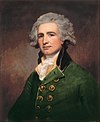
|
21 January 1790 | 26 November 1792 | 2 | |
| 28 | George Dick | 26 November 1792 | 9 November 1795 | 3 | Acting | |
| 29 | John Griffith | 9 November 1795 | 27 December 1795 | Acting | ||
| 30 | Jonathan Duncan | 
|
27 December 1795 | 11 August 1811 | 16 | |
| 31 | George Brown | 11 August 1811 | 12 August 1812 | 1 | Acting | |
| 32 | Sir Evan Nepean, Bt. | 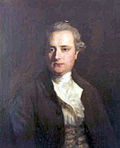
|
12 August 1812 | 1 November 1819 | 7 | |
| 33 | Mountstuart Elphinstone | 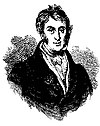
|
1 November 1819 | 1 November 1827 | 8 | |
| 34 | Sir John Malcolm | 
|
1 November 1827 | 1 December 1830 | 3 | |
| 35 | Sir Thomas Sidney Beckwith | 1 December 1830 | 15 January 1831 | 1 | Acting | |
| 36 | John Romer | 17 January 1831 | 21 March 1831 | Acting | ||
| 37 | John FitzGibbon, 2nd Earl of Clare | 
|
21 March 1831 | 17 March 1835 | 4 | |
| 38 | Sir Robert Grant | 
|
17 March 1835 | 9 July 1838 | 3 | |
| 39 | James Farish | 11 July 1838 | 31 May 1839 | 1 | Acting | |
| 40 | James Rivett Carnac | 
|
31 May 1839 | 27 April 1841 | 2 | |
| 41 | William Hay Macnaghten | 
|
27 April 1841 | 28 April 1841 | Acting | |
| 42 | George William Anderson | 28 April 1841 | 9 June 1842 | 1 | Acting | |
| 43 | George Arthur | 
|
9 June 1842 | 6 August 1846 | 4 | |
| 44 | Lestock Robert Reid | 6 August 1846 | 23 January 1847 | 1 | Acting | |
| 45 | George Russell Clerk | 23 January 1847 | 1 May 1848 | 1 | Acting | |
| 46 | Lucius Cary (Lord Falkland) | 
|
1 May 1848 | 26 December 1853 | 5 | |
| 47 | John Elphinstone (Lord Elphinstone) | 
|
26 December 1853 | 11 May 1860 | 7 | |
| 48 | George Russell Clerk | 11 May 1860 | 24 April 1862 | 2 | Acting |
Sources: The India List and India Office List[6][12][27] and Oxford Dictionary of National Biography[23]
Deputy Governors of Bombay (1668–1690)
The transfer of the headquarters of the company's power to Bombay largely eliminated the need for a Deputy Governor. In spite of the change, the title continued to be borne by the second member of the Executive Council of the Governor. It fell into disuse sometime between 1720 and 1758.
| No. | Name | Assumed office | Left office | Years in office |
|---|---|---|---|---|
| 1 | Henry Young | 1668 | 13 November 1669 | 2 |
| 2 | Matthew Gray | 1670 | 1670 | |
| 3 | Phillip Gifford | 1670 | 1676 | 6 |
| 4 | Henry Oxenden | 1676 | 1682 | 6 |
| 5 | Charles Ward[b] | 1682 | 1683 | 1 |
| 6 | Charles Zinzan | 1684 | 1686 | 2 |
| 7 | John Wyborne | 1686 | 1688 | 2 |
| 8 | John Vaux | 1689 | 1689 | |
| 9 | George Cooke | 1689 | 1690 | 1 |
| 10 | George Weldon | 1690 | 1690 | |
| 11 | John Burniston | 1690 | 1704 | 14 |
Source: Origin of Bombay[28]
Crown governors (1862–1948)


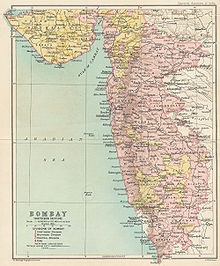
Following the Indian Rebellion of 1857,[29] the company was accused of mismanagement, and Bombay reverted to the British Crown.[30] On 2 August 1858, the British Parliament began abolition of the company and asserted full, direct Crown authority over India. The execution was slow. The company for purposes of liquidation maintained its formal existence until 1874.[31] India was thereafter directly ruled by the Crown as a colony of the United Kingdom, and officially known as the Empire of India after 1876. India consisted of some regions referred to as British India that were directly administered by the British and other regions called the Princely States that were ruled by Indian rulers.[32][33]
Laws were made for British India by a Legislative Council under the Viceroy having wide powers of legislation. This council could pass laws as important as any Acts by the British Parliament. The Legislative Council was made of six members besides the Viceroy.[34][35] In addition, the governors served as extraordinary members when the Legislative Council met in their provinces. They also had an Executive Council of two members of the Indian Civil Service for 12 years standing, appointed by the Crown.[31][35]
The Governor would consult the Executive Council in the exercise of all his functions (except on trivial or urgent matters or where the public interest made it undesirable). He would not be required to consult in cases where he was specifically authorised by the Constitution to act in his discretion or on the advice of, or after consultation with, some other person or authority. He would in general act in accordance with the advice of the Executive Council but could act against such advice, where he considered it necessary in the interests of the public order, public faith or good government; in such cases he would be required to seek approval of the Secretary of State for India.[36]
The Governor didn't have the right to make or suspend any laws, unless in cases of urgent necessity, he could do it with the consent of the Governor-General of India. He didn't have the power of creating a new office, or granting any salary, gratuity, or allowance, without the sanction of the Governor-General of India.[37] The Governor-General had full power to superintend and control the Governor in all points relating to the civil or military administration of the Presidency, and the Governor had to obey the orders and instructions of the Governor-General in all cases.[38] The Governors could propose to the Governor-General drafts of any laws which they thought expedient, together with their reasons for the same; and the Governor-General communicated the resolutions to the Governor, after considering the reasons.[39] The Governors regularly transmitted to the Governor-General true copies of all orders and acts of their governments, and also advice of all matters which they felt to be communicated to the Governor-General.[40] The powers of the Governors were not suspended when the Governor-General visited the Presidency.[41] The departure of the Governor from India with intent to return to Europe was deemed to be a resignation from his office. Alternately, the Governor could resign by declaring it in writing and delivering it to the secretary for the public department of the Presidency.[42]
In 1906, Bombay Presidency had four commissionerships and twenty-six districts with Bombay City as its capital. The four commissionerships were the northern province of Gujarat, the central province of Deccan, the southern province of Carnatic, and the northwestern province of Sind.[9] The 26 districts were Bombay City, Bombay Island,[c] Ahmedabad, Bharuch, Kaira, Panch Mahal, Surat, Thana, Ahmednagar, East Khandesh,[d] West Khandesh,[d] Nasik, Poona, Satara, Solapur, Belgaum, Bijapur, Dharwar, North Canara, Kolaba, Ratnagiri, Karachi, Hyderabad, Shikarpur, Thar and Parkar and Upper Sind Frontier.[43][44][45] Aden separated from Bombay Presidency in 1932,[23] and Sind separated in 1936.[25]
| No. | Name | Portrait | Assumed office | Left office | Years in office | Remarks[a] |
|---|---|---|---|---|---|---|
| 1 | Sir Bartle Frere | 
|
24 April 1862 | 6 March 1867 | 5 | |
| 2 | Sir William Vesey-FitzGerald | 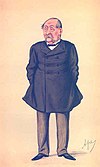
|
6 March 1867 | 6 May 1872 | 5 | |
| 3 | Sir Philip Wodehouse | 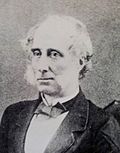
|
6 May 1872 | 30 April 1877 | 5 | |
| 4 | Sir Richard Temple, Bt. | 
|
30 April 1877 | 13 March 1880 | 3 | |
| 5 | Lionel Robert Ashburner | 13 March 1880 | 28 April 1880 | Acting | ||
| 6 | Sir James Fergusson, Bt. | 
|
28 April 1880 | 27 March 1885 | 5 | |
| 7 | James Braithwaite Peile | 27 March 1885 | 30 March 1885 | Acting | ||
| 8 | The Lord Reay | 
|
30 March 1885 | 12 April 1890 | 5 | |
| 9 | The Lord Harris | 
|
27 March 1890 | 16 February 1895 | 5 | |
| 10 | Herbert Mills Birdwood | 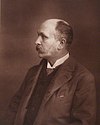
|
16 February 1895 | 18 February 1895 | Acting | |
| 11 | The Lord Sandhurst | 
|
18 February 1895 | 17 February 1900 | 5 | |
| 12 | The Lord Northcote | 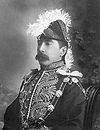
|
17 February 1900 | 5 September 1903 | 3 | |
| 13 | James Monteath | 5 September 1903 | 12 December 1903 | Acting | ||
| 14 | The Lord Lamington | 
|
12 December 1903 | 27 July 1907 | 4 | |
| 15 | John William Muir Mackenzie | 
|
27 July 1907 | 18 October 1907 | Acting | |
| 16 | Sir George Sydenham Clarke | 
|
18 October 1907 | 5 April 1913 | 6 | |
| 17 | The Lord Willingdon | 
|
5 April 1913 | 16 December 1918 | 5 | |
| 18 | Sir George Lloyd | 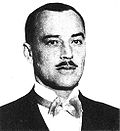
|
16 December 1918 | 8 December 1923 | 5 | |
| 19 | Maurice Hayward | 8 December 1923 | 10 December 1923 | Acting | ||
| 20 | Sir Leslie Orme Wilson | 
|
10 December 1923 | 8 December 1928 | 5 | |
| 21 | Sir Henry Staveley Lawrence | 20 March 1926 | 19 July 1926 | Acting | ||
| 22 | Sir Frederick Sykes | 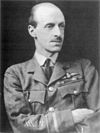
|
9 December 1928 | 9 December 1933 | 5 | |
| 23 | John Ernest Buttery Hotson[e] | 1931 | 1931 | Acting | ||
| 24 | The Lord Brabourne | 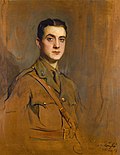
|
9 December 1933 | 30 May 1937 | 4 | |
| 25 | Robert Duncan Bell | 30 May 1937 | 18 September 1937 | Acting | ||
| 26 | The Earl of Scarbrough | 18 September 1937 | 24 March 1943 | 6 | ||
| 27 | Sir John Colville | 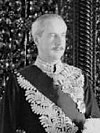
|
24 March 1943 | 5 January 1948 | 5 |
Sources: Oxford Dictionary of National Biography[23] and Governor of Maharashtra[46]
Governors of Maharashtra
This is a list of governors of Maharashtra:
| No. | Name (born – died) |
Portrait | Home state | Tenure in office | Immediate prior position held | Appointed by | |||
|---|---|---|---|---|---|---|---|---|---|
| From | To | Time in office | |||||||
| Governor of Bombay State | |||||||||
| 1 | Raja Sir Maharaj Singh CIE CStJ (1878–1959) |

|
Punjab | 6 January 1948 |
30 May 1952 |
4 years, 145 days | President, All India Conference of Indian Christians | Lord Louis Mountbatten (Governor-General) | |
| 2 | Sir Girija Shankar Bajpai KCSI KBE CIE (1891–1954) |

|
Uttar Pradesh | 30 May 1952 |
5 December 1954[†] |
2 years, 189 days | Secretary-General, Ministry of External Affairs | Rajendra Prasad (President) | |
| – | Justice M. C. Chagla Chief Justice of Bombay High Court (1900–1981) (Acting) |

|
Bombay | 5 December 1954 |
2 March 1955 |
87 days | Chief Justice of Bombay High Court (continued in office) | ||
| 3 | Harekrushna Mahatab (1899–1987) |

|
Orissa | 2 March 1955 |
14 October 1956[§] |
1 year, 226 days | Member of Parliament, Lok Sabha | ||
| – | Justice M. C. Chagla Chief Justice of Bombay High Court (1900–1981) (Acting) |

|
Bombay | 14 October 1956 |
10 December 1956 |
57 days | Chief Justice of Bombay High Court (continued) | ||
| 4 | Sri Prakasa (1890–1971) |

|
Uttar Pradesh | 10 December 1956 |
30 April 1960 |
3 years, 142 days | Governor of Madras State | ||
| Governor of Maharashtra | |||||||||
| (4) | Sri Prakasa (1890–1971) |

|
Uttar Pradesh | 1 May 1960 |
16 April 1962 |
1 year, 350 days | Governor of Bombay State | Rajendra Prasad (President) | |
| 5 | P. Subbarayan (1889–1962) |

|
Madras | 17 April 1962 |
6 October 1962[†] |
172 days | Union Cabinet Minister for Transport and Communications | ||
| – | Justice H. K. Chainani Chief Justice of Bombay High Court (1904–1965) (Acting) |

|
Maharashtra | 6 October 1962 |
28 November 1962 |
53 days | Chief Justice of Bombay High Court (continued) | Sarvepalli Radhakrishnan (President) | |
| 6 | Vijaya Lakshmi Pandit (1900–1990) |

|
Uttar Pradesh | 28 November 1962 |
18 October 1964[§] |
1 year, 325 days | High Commissioner to the United Kingdom; Ambassador to Ireland and Spain | ||
| – | Justice H. K. Chainani Chief Justice of Bombay High Court (1904–1965) (Acting) |

|
Maharashtra | 18 October 1964 |
14 November 1964 |
27 days | Chief Justice of Bombay High Court (continued) | ||
| 7 | P. V. Cherian (1893–1969) |

|
Madras | 14 November 1964 |
8 November 1969[†] |
4 years, 359 days | Chairman of Madras Legislative Council | ||
| – | Justice S. P. Kotval Chief Justice of Bombay High Court (1910–1987) (Acting) |

|
Maharashtra | 8 November 1969 |
26 February 1970 |
110 days | Chief Justice of Bombay High Court (continued) | V. V. Giri (President) | |
| 8 | Ali Yavar Jung (1906–1976) |

|
Telangana | 26 February 1970 |
11 December 1976[†] |
6 years, 289 days | Ambassador to the United States | ||
| – | Justice R. M. Kantawala Chief Justice of Bombay High Court (1916–1992) (Acting) |

|
Maharashtra | 11 December 1976 |
30 April 1977 |
140 days | Chief Justice of Bombay High Court (continued) | Fakhruddin Ali Ahmed (President) | |
| 9 | Sadiq Ali (1910–2001) |

|
Rajasthan | 30 April 1977 |
8 November 1980 |
3 years, 192 days | President, Indian National Congress (Organisation) (until 1973) | B. D. Jatti (Acting President) | |
| 10 | Air Chief Marshal (Retd.) Om Prakash Mehra PVSM (1919–2015) |

|
Punjab | 8 November 1980 |
5 March 1982 |
1 year, 117 days | Chief of the Air Staff (until 1976) | Neelam Sanjiva Reddy (President) | |
| 11 | Air Chief Marshal (Retd.) Idris Hasan Latif PVSM (1923–2018) |

|
Telangana | 6 March 1982 |
16 April 1985[§] |
3 years, 41 days | Chief of the Air Staff (until 1981) | ||
| – | Justice Konda Madhava Reddy Chief Justice of Bombay High Court (1923–1997) (Acting) |
Telangana | 16 April 1985 |
30 May 1985 |
44 days | Chief Justice of Bombay High Court (continued) | Zail Singh (President) | ||
| 12 | Kona Prabhakara Rao (1916–1990) |

|
Andhra Pradesh | 31 May 1985 |
2 April 1986 |
306 days | Governor of Sikkim | ||
| 13 | Shankar Dayal Sharma (1918–1999) |

|
Madhya Pradesh | 3 April 1986 |
2 September 1987[§] |
1 year, 152 days | Governor of Punjab and Administrator of Chandigarh | ||
| – | Justice S. K. Desai Acting Chief Justice of Bombay High Court (1928–2011) (Acting) |

|
Maharashtra | 3 September 1987 |
2 November 1987 |
60 days | Judge of Bombay High Court (continued) | R. Venkataraman (President) | |
| – | Justice Chittatosh Mookerjee Chief Justice of Bombay High Court (born 1929) (Acting) |

|
West Bengal | 2 November 1987 |
20 February 1988 |
110 days | Chief Justice of Bombay High Court (continued) | ||
| 14 | Kasu Brahmananda Reddy (1909–1994) |

|
Andhra Pradesh | 20 February 1988 |
18 January 1990[§] |
1 year, 332 days | Member of Parliament, Lok Sabha (until 1984) | ||
| – | Justice Chittatosh Mookerjee Chief Justice of Bombay High Court (born 1929) (Acting) |

|
West Bengal | 18 January 1990 |
14 February 1990 |
27 days | Chief Justice of Bombay High Court (continued) | ||
| 15 | Chidambaram Subramaniam (1910–2000) |

|
Tamil Nadu | 15 February 1990 |
9 January 1993[§] |
2 years, 329 days | Union Cabinet Minister of Defence (until 1980) | ||
| 16 | P. C. Alexander IAS (Retd.) (1921–2011) |

|
Kerala | 12 January 1993 |
13 July 2002[§] |
9 years, 182 days | Governor of Tamil Nadu (until 1990) | Shankar Dayal Sharma (President) | |
| – | Justice C. K. Thakker Chief Justice of Bombay High Court (born 1943) (Acting) |

|
Gujarat | 13 July 2002 |
10 October 2002 |
89 days | Chief Justice of Bombay High Court (continued) | K. R. Narayanan (President) | |
| 17 | Mohammed Fazal (1922–2014) |

|
Uttar Pradesh | 10 October 2002 |
5 December 2004 |
2 years, 56 days | Governor of Goa | A. P. J. Abdul Kalam (President) | |
| 18 | S. M. Krishna (1932–2024) |
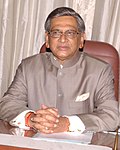
|
Karnataka | 12 December 2004 |
5 March 2008[§] |
3 years, 84 days | Chief Minister of Karnataka (until May 2004) | ||
| – | S. C. Jamir (born 1931) (Additional charge until 8 July 2008) |
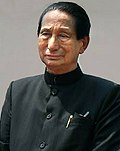
|
Nagaland | 9 March 2008 |
8 July 2008 |
1 year, 319 days | Governor of Goa | Pratibha Patil (President) | |
| 19 | S. C. Jamir (born 1931) |

|
8 July 2008 |
22 January 2010 | |||||
| 20 | K. Sankaranarayanan (1932–2022) |

|
Kerala | 22 January 2010 |
7 May 2012 |
4 years, 214 days | Governor of Jharkhand | ||
| 7 May 2012 |
24 August 2014[§] | ||||||||
| – | Om Prakash Kohli Governor of Gujarat (1935–2023) (Additional Charge) |

|
Delhi | 24 August 2014 |
30 August 2014 |
6 days | Governor of Gujarat (continued) | Pranab Mukherjee (President) | |
| 21 | C. Vidyasagar Rao (born 1941) |

|
Telangana | 30 August 2014 |
4 September 2019 |
5 years, 5 days | Union Minister of State for Commerce and Industry (until 2004) | ||
| 22 | Bhagat Singh Koshyari (born 1942) |

|
Uttarakhand | 5 September 2019 |
17 February 2023[§] |
3 years, 165 days | Member of Parliament, Lok Sabha (until May 2019) | Ram Nath Kovind (President) | |
| 23 | Ramesh Bais (born 1947) |

|
Chhattisgarh | 18 February 2023 |
30 July 2024 |
1 year, 159 days | Governor of Jharkhand | Droupadi Murmu (President) | |
| 24 | C. P. Radhakrishnan (born 1957) |

|
Tamil Nadu | 31 July 2024 | Incumbent | 238 days |
| ||
See also
- List of chief ministers of Maharashtra
- List of deputy chief ministers of Maharashtra
- List of chairpersons of the Maharashtra Legislative Council
- List of speakers of the Maharashtra Legislative Assembly
- List of deputy speakers of the Maharashtra Legislative Assembly
- List of leaders of the house in the Maharashtra Legislative Assembly
- List of leaders of the house in the Maharashtra Legislative Council
- List of leaders of the opposition in the Maharashtra Legislative Assembly
- List of leaders of the opposition in the Maharashtra Legislative Council
- Governors of India
References
- ^ "Governor – Information under RTI Act" (PDF). p. 1. Archived from the original (PDF) on 20 February 2014. Retrieved 16 March 2013.
- ^ "Jishnu Dev Varma is new Governor of Telangana; Radhakrishnan moves to Maharashtra". Telangana Today. 28 July 2024. Retrieved 28 July 2024.
- ^ "PRESS COMMUNIQUE". President of India. 27 July 2024. Retrieved 28 July 2024.
- ^ "Catherine of Bragança (1638–1705)". BBC. Retrieved 5 November 2008.
- ^ Thana District Gazetteer 1986, Portuguese (1500–1670)
- ^ a b c d e The India List and India Office List 1905, p. 125
- ^ Da Cunha 1993, p. 323
- ^ Anderson, Philip (1854), The English in Western India, Smith and Taylor, p. 55, ISBN 978-0-7661-8695-8, retrieved 18 August 2008
- ^ a b c d Dupont 2001, p. 564
- ^ Carsten, F. L. (1961), The New Cambridge Modern History (Volume V: The ascendancy of France 1648–88), vol. V, Cambridge University Press Archive, p. 427, ISBN 978-0-521-04544-5, retrieved 7 January 2009
- ^ Hughes, William (1863), The geography of British history, Longman, Green, Longman, Roberts, & Green, p. 227, retrieved 15 January 2009
- ^ a b The India List and India Office List 1905, p. 126
- ^ Thana District Gazetteer 1986, The Marathas
- ^ Ratnagiri and Savantvadi District Gazetteer 1996, Justice
- ^ Thana District Gazetteer 1986, Acquisition, Changes, and Staff (Acquisition, 1774–1817
- ^ Kalia, Ravi (2004), Gandhinagar: Building National Identity in Postcolonial India, University of South Carolina Press, p. 16, ISBN 978-1-57003-544-9, retrieved 15 January 2009
- ^ Farooqui 2005, p. 18
- ^ a b Dupont 2001, p. 563
- ^ Naravane, M.S. (2006), Battles of the Honourable East India Company, APH Publishing, pp. 80–1, ISBN 978-81-313-0034-3
- ^ Ahmadnagar District Gazetteer 1976, Maratha Period
- ^ Cox 1887, pp. 257–261
- ^ a b c d Dodwell, p. 59
- ^ a b c d "Colonial administrators and post-independence leaders in India (1616–2000)". Oxford Dictionary of National Biography (online ed.). Oxford University Press. (Subscription or UK public library membership required.)
- ^ Cox 1887, pp. 320, 321
- ^ a b "History of Sindh". Government of Sindh. Archived from the original on 27 December 2008. Retrieved 7 January 2009.
- ^ Cox 1887, p. 195
- ^ The India List and India Office List 1905, p. 127
- ^ Da Cunha 1993, p. 324
- ^ "History of Mumbai". Department of Theoretical Physics (Tata Institute of Fundamental Research). 17 November 1999. Retrieved 23 December 2008.
- ^ "Sir Henry Bartle Edward Frere". Department of Theoretical Physics (Tata Institute of Fundamental Research). 4 February 1999. Retrieved 23 December 2008.
- ^ a b Dupont 2001, p. 483
- ^ The Imperial Gazetteer of India, v. 4, p. 59
- ^ The Imperial Gazetteer of India, v. 4, p. 60
- ^ Dicey, Albert Venn (2005), Introduction to the Study of the Law of the Constitution, Adamant Media Corporation, p. 95, ISBN 978-1-4021-8555-7, retrieved 12 January 2009
- ^ a b Hunter, William Wilson (2005), The Indian Empire: Its People, History, and Products, Asian Educational Services, p. 432, ISBN 978-81-206-1581-6, retrieved 13 January 2009
- ^ Madden, A. F.; David Kenneth Fieldhouse, John Darwin (2000), Select Documents on the Constitutional History of the British Empire and Commonwealth: The Foundations of a Colonial System of Government, Greenwood Publishing Group, p. 409, ISBN 978-0-313-29072-5, retrieved 13 January 2009
- ^ The Law-dictionary, Explaining the Rise, Progress, and Present State of the British Law 1835, p. 364, § 59
- ^ The Law-dictionary, Explaining the Rise, Progress, and Present State of the British Law 1835, p. 365, § 65
- ^ The Law-dictionary, Explaining the Rise, Progress, and Present State of the British Law 1835, p. 365, § 66
- ^ The Law-dictionary, Explaining the Rise, Progress, and Present State of the British Law 1835, p. 365, § 68
- ^ The Law-dictionary, Explaining the Rise, Progress, and Present State of the British Law 1835, p. 365, § 67
- ^ The Law-dictionary, Explaining the Rise, Progress, and Present State of the British Law 1835, p. 365, § 79
- ^ The Imperial Gazetteer of India, v. 8, p. 266
- ^ Singh, K. S.; B. V. Bhanu, B. R. Bhatnagar, Anthropological Survey of India, D. K. Bose, V. S. Kulkarni, J. Sreenath (2004), Maharashtra, vol. XXX, Popular Prakashan, p. 7, ISBN 978-81-7991-102-0, retrieved 8 November 2008
{{citation}}: CS1 maint: multiple names: authors list (link) - ^ The Imperial Gazetteer of India, v. 8, p. 267
- ^ "Previous Governors List". Governor of Maharashtra. Archived from the original on 6 February 2009. Retrieved 23 December 2008.
Sources
- Ahmadnagar District Gazetteer, The Gazetteer Departments (Government of Maharashtra), 1976, archived from the original on 10 April 2009, retrieved 15 January 2009
- Calcutta Magazine and Monthly Register, vol. 33–36, S. Smith & Co, 1832, retrieved 7 November 2008
- Cox, Edmund Charles (1887), A short history of the Bombay Presidency, Thacker and Company, retrieved 16 January 2009
- Da Cunha, José Gerson (1993), Origin of Bombay, Asian Educational Services, ISBN 978-81-206-0815-3, retrieved 4 January 2009
- Dodwell, H.H. (1922), The Cambridge History of India, Cambridge University Press Archive, retrieved 16 January 2009
- Dupont, Jerry (2001), The Common Law Abroad: Constitutional and Legal Legacy of the British Empire, Wm. S. Hein Publishing, ISBN 978-0-8377-3125-4, retrieved 6 January 2009
- Farooqui, Amar (2005), Smuggling as Subversion: Colonialism, Indian Merchants, and the Politics of Opium, 1790–1843, Lexington Books, ISBN 978-0-7391-0886-4, retrieved 16 January 2009
- Great Britain India Office (1905), The India List and India Office List, vol. I, Harrison, retrieved 9 October 2008
- Hunter, William Wilson; James Sutherland Cotton, Richard Burn, William Stevenson Meyer, Great Britain India Office (1909), The Imperial Gazetteer of India, Clarendon Press, retrieved 7 January 2009
{{citation}}: CS1 maint: multiple names: authors list (link) - Naravane, M.S. (2006), Battles of the Honourable East India Company, APH Publishing, pp. 80–1, ISBN 978-81-313-0034-3
- Ratnagiri and Savantvadi District Gazetteer, vol. X, The Gazetteers Department (Government of Maharashtra), 1996 [1880], retrieved 15 January 2009
- Thana District Gazetteer, Gazetteers of the Bombay Presidency, vol. XIII, The Gazetteer Departments (Government of Maharashtra), 1986 [1882], retrieved 7 January 2009
- Thomas Edlyne Tomlins, Thomas Colpitts Granger (1835), The Law-dictionary, Explaining the Rise, Progress, and Present State of the British Law:: Defining and Interpreting the Terms Or Words of Art, and Comprising Also Copious Information on the Subjects of Trade and Government, vol. 1, J. Clarke, J. and W. T. Clarke, Longman, Rees, Orme, Brown, Green, and Longman, pp. M1 364, M1 365, retrieved 16 January 2009








